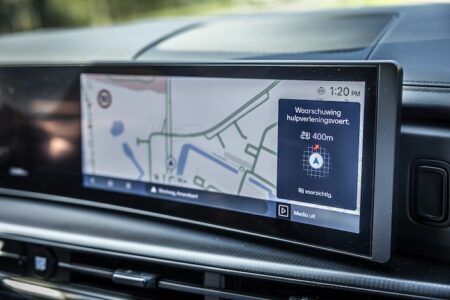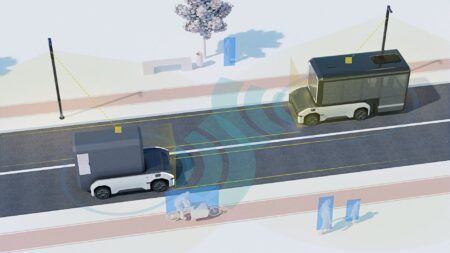A new Innovate UK project led by Spirent Communications and involving the Warwick Manufacturing Group (WMG) at the University of Warwick and Chronos Technology is aiming to develop a more accurate location system for intelligent vehicles by ‘fusing’ global navigation satellite systems (GNSS) and wi-fi signals.
The need for smart devices to have a highly accurate self-awareness of their own location, and the location of other smart devices around them is becoming increasingly important. In applications such as connected and autonomous vehicles (CAVs) and transport systems, accurate positioning is an essential operational requirement to their safe interaction with other vehicles, pedestrians or infrastructure.
Many devices currently rely on a singular location technology (typically GPS), which is one type of the wider GNSS ecosystem. These systems often suffer from their environment, typically in urban areas where buildings and other cityscape features interfere with signals. Wi-fi signals exist almost universally within dense urban areas, so there is potential to ‘fuse’ these signals with the GNSS data to provide precise location information.
With £694,000 (US$939,000) of government agency funding, the 18-month Enhanced Assured Location Simulator Leveraging WiFi and GNSS Sensor Fusion (ELWAG) project will seek to develop to test this pioneering hybrid wi-fi and GNSS location system in a cost-effective, repeatable and safe environment, so that manufacturers can verify its performance.
Researchers at WMG will take physical layer measurements of both wi-fi and GNSS signals in CAV scenarios, in and around the University of Warwick campus and the local urban road network. These measurements will then assist in Spirent’s development of an RF (radio frequency) propagation model that will overlay RF effects on their wi-fi access point simulator. WMG researchers will then perform RF validation and verification activities around the developed model, to provide a level of assurance on its performance.
“Currently wi-fi access point plus GNSS simulation can only be achieved in an ad-hoc manner and does not allow for the testing of moving vehicles, multipath effects, insertion of data errors, spoofing and above all controlled, repeatable testing,” explained Mark Holbrow, director of engineering and product development at Spirent’s positioning business unit.
“In the autonomous vehicle sector, location accuracy can vary by up to 5m, which is unacceptable from a safety perspective. Bringing that accuracy down to 30cm through sensor fusion will have substantial implications for autonomous navigation.”
Dr Matthew Higgins, associate professor in the intelligent vehicles group at WMG, said, “The safety and functional assurance of future autonomous vehicles will be one of the many critical paths to large consumer adoption. Through this project, we will contribute toward providing innovative solutions to the challenges of using sensor fusion in this testing context.”
Dr Erik Kampert, senior research fellow at WMG, added, “This is a highly technical project, which will require a holistic understanding of the signal propagation characteristics between satellites, infrastructure and vehicles. The results will impact future autonomous testing methodologies.”




